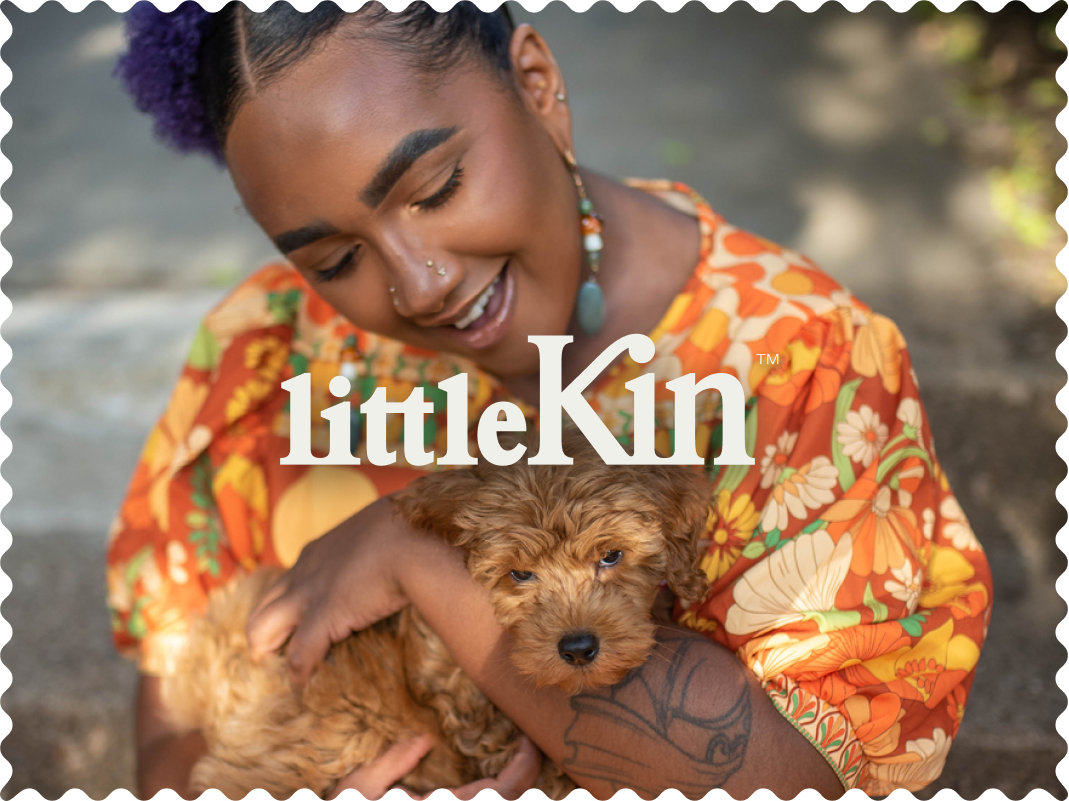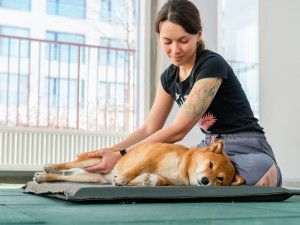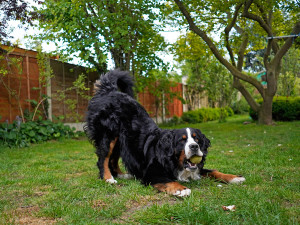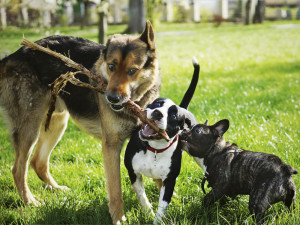Why Your Dog Does That Adorable ‘Big Stretch’ Every Morning
“Biiiiiiiiiiiiiiiig stretch!”
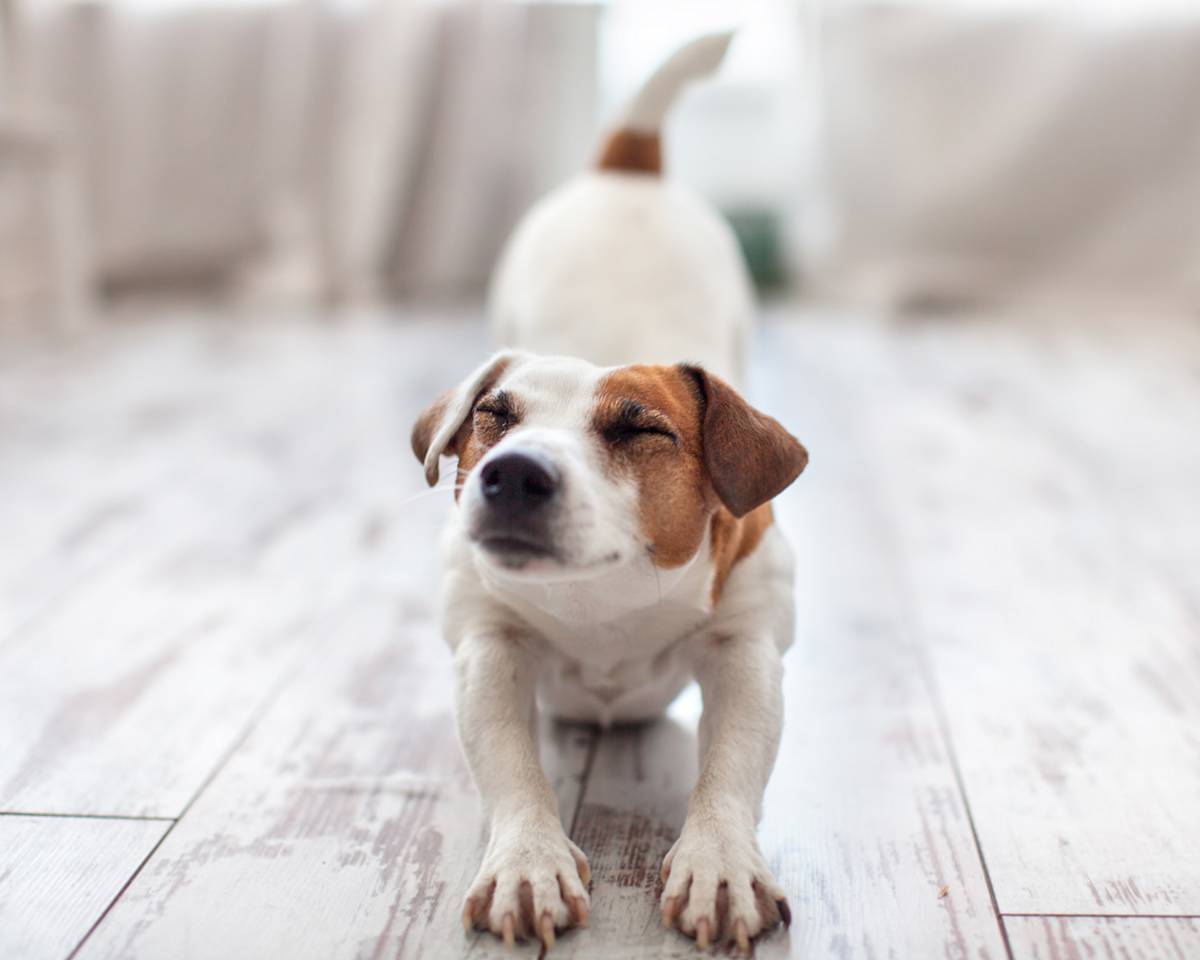
Share Article
All pet parents know that it’s pretty much illegal to not exclaim, “Biiiiiiiiiiiiiiiig stretch!” when your dog slips into the ‘downward dog’ pose. (Why do we all do that? File it as one of life’s mysteries). My dog Sherlock is a huge fan of the pose, often accompanying it with a yawn as he gets up from a day of snoozing, letting me know that it’s time to shut my laptop and take him for a walk.
Most dogs do it but have you ever wondered why they do this stretch? What benefits do dogs gain from it, and are they trying to tell us something when they do it? Is it ever a bad thing? Let’s find out.
What is the downward dog pose?
This doggy stance is so common that the downward-facing dog yoga pose was named after it. You probably know exactly what we’re talking about but it’s when a dog stretches out their front paws, keeping their back legs upright, with their chest almost touching the ground. It’s usually only done for a few seconds before the pup settles into a resting posture or gets up to go about their day.
Is this normal behaviour in dogs?
You’ll be relieved to know that this pose is generally considered perfectly normal behaviour for dogs (phew). The eagle-eyed among you may even have spotted that your dog does it in different situations throughout the day – let’s dissect some of the reasons they might be doing it.
Why dogs do the downward dog stretch
Saying “Hello”
Ever noticed that your dog does this stretch when you walk into a room or come home from work? That’s because it’s a natural part of their greeting behaviour, according to Claire Stallard, behaviour welfare research policies and training standards lead at national pet charity Blue Crossopens in new tab.
“It signals friendship and ” she explains. “When greeting people they know, you’ll usually see a social tail wag and a soft gaze in your direction.”
Essentially, it’s a non-threatening posture and a way of saying “Hello”, which might happen after the initial excitement of you walking through the door. Connie Garvey is a registered veterinary nurse at Woodgreen Pets Charityopens in new tab, who tells us that it’s usually a very slow stretch on the ground or onto the legs of the human they’re greeting: “Dogs will usually appear calm, relaxed and happy when doing it.”
A simple rejuvenation stretch
How good does a quick stretch feel after you’ve been sleeping, or sat at your desk all day? Pretty refreshing, right? Well, it’s the same for dogs.
“This simple stretch can wake up the muscles after resting or sleeping, in preparation for moving,” explains Claire.
This act of stretching after being sedentary is called pandiculation, which is an involuntary response that occurs in most animals, including humans, dogs, and even birds. Recent research is lacking, though a 2011 paper published in the Journal of Bodywork and Movement Therapiesopens in new tab suggests that pandiculation helps to reset the myofascial system after resting. Essentially, it’s the body’s way of preparing for movement.
Dogs (and humans) often yawn when stretching after waking, which is known as spontaneous yawning. It’s thought that yawning helps transition animals from REM sleep (the final stage of a sleep cycle) to wakefulnessopens in new tab by stretching muscles in the jaw, thereby enhancing blood flow to the brain and increasing arousal. The more you know, huh?
Anticipation of fun
While pandiculation is involuntary, dogs will often do an intentional downward dog to limber up when they think something fun is about to happen.
“Dogs might do this stretch when they’re anticipating something pleasurable, like a walk or a game with a pet parent,” Claire advises.
A quick stretch before physical activity benefits both dogs and humans, but while we might shirk our pre-run warm-up, dogs appear to be way smarter than us. Instinctively loosening muscles and boosting circulation before heading out for zoomies in the park? Savvy little things.
Ageing
There’s no getting around the fact that our bodies change as we get older, and it’s no different for dogs. Connie tells us that older dogs tend to stretch more, especially if they feel stiff or have aching joints. (This could also be a sign of arthritis, which is common in senior dogs and requires pain management, so be sure to get a proper diagnosis from a vet).
Many factors influence how active a dog is, including their size, breed and if they live in a rural or urban area, but the general consensus is that canine activity levels decline with ageopens in new tab. So, longer periods of inactivity will tend to result in more stretching as dogs try to relieve the stiffness associated with being sedentary.
Canine Cognitive Dysfunction (CCD, aka dog dementia) is also a common affliction in senior dogs, which can affect the sleep-wake cycleopens in new tab. This might also lead to increased stretching as they adjust to a different nap schedule.
Don’t confuse ‘downward dog’ with a play bow
Play bows are an important part of a dog’s non-verbal communicationopens in new tab, used to catch the attention of another dog or a human and let them know that they��’re ready for a spot of F-U-N. “The play bow is similar to the downward dog stretch, but it’s more lively, energetic, and bouncy,” explains Claire. “It’s a friendly gesture to play or an invitation to start a chase game.”
The play bow may be accompanied by a bark, and it’s also used to duck from another dog’s jaws during a friendly spar or to re-initiate play during a break. Basically, it’s a dog’s way of letting everyone involved know that they’ve still got energy in the tank. So, don’t put that ball away just yet…
When is the ‘downward dog’ stretch a cause for concern?
Confusingly, the ‘downward dog’ pose is similar to the ‘prayer’ position, which is a stretch that may indicate that your dog’s dealing with some digestive discomfort (the pose can temporarily relieve pain). Thankfully, there are a few ways of telling whether our precious pup is trying to ease discomfort or simply saying, “Hi”.
“The ‘prayer’ position appears similar to ‘downward dog’, with the front legs and chest resting on the ground whilst the rear is raised, but it’s actually a sign of abdominal pain or tummy-ache,” advises Alison Thomas, the Blue Cross’s head of veterinary standards. “Sometimes this can simply be a bit of mild indigestion, but occasionally it indicates a more serious illness like pancreatitis.”
If you notice changes in the way your dog is stretching, they’re stretching a lot more than usual, or are displaying any of the following signs, then it’s time to call the vet.
Signs to look out for
not wanting to eat
retching or vomiting
reluctance to move
showing signs of pain when handled
lethargy
restlessness
excessive panting or drooling
swelling of the abdomen
Garvey reminds us that it’s important to be aware of our dogs’ usual behaviour, so we can easily tell when something seems a little off.
“Every dog is an individual and they’ll express themselves and communicate using their body languageopens in new tab in different ways,” Connie says. “Observing your dog and knowing what’s normal for them will highlight when there could be a potential problem. Look for how they move their body, as this gives a good indication of how they may be feeling.
“Looking at your dog’s whole body helps us to better understand why they’re behaving the way they are, as well as taking the context of the situation into consideration.”
Basically, if you’re ever even slightly worried that your dog is sick, it’s always best to err on the side of caution and speak to a professional.
References
Bertolucci, Luiz Fernando. “Pandiculation: Nature’s Way of Maintaining the Functional Integrity of the Myofascial System?opens in new tab” Journal of Bodywork and Movement Therapies, vol. 15, no. 3, Jan. 2011, pp. 268–80.
Gallup, Andrew C. “The Causes and Consequences of Yawning in Animal Groups.opens in new tab” Animal Behaviour, vol. 187, Apr. 2022, pp. 209–19.
Lee, Hannah, et al. “Age And Physical Activity Levels in Companion Dogs: Results From the Dog Aging Project.opens in new tab” The Journals of Gerontology Series A, vol. 77, no. 10, Apr. 2022, pp. 1986–93.
Mondino, Alejandra, et al. “Activity Patterns Are Associated With Fractional Lifespan, Memory, and Gait Speed in Aged Dogs.opens in new tab” Scientific Reports, vol. 13, no. 1, Feb. 2023.
Byosiere, Sarah-Elizabeth, et al. “Investigating the Function of Play Bows in Dog and Wolf Puppies (Canis Lupus Familiaris, Canis Lupus Occidentalis).opens in new tab” PLoS ONE, vol. 11, no. 12, Dec. 2016, p. e0168570.
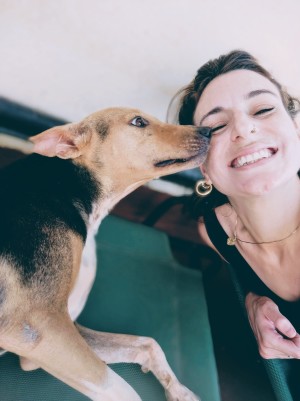
Lisa Bowman
Lisa is a writer whose work has been featured in the likes of Stylist, Metro and The Guardian. She spends her days at a computer so she can bankroll her two rescue dogs, who may or may not be The Cutest Dogs in the World.
Related articles
How to Tell If Your Dog Is Just Playing (& When to Step In If They’re Not)
It’s all fun and games... until it’s not
![Woman with arm tattoos and wearing a black t-shirt stretching out the back legs of a Shiba Inu dog laying on a dark green mat]()
Does Your Dog Need a Massage?
Help your dog stay fit and flexible with these stretch techniques by a certified pet strength and conditioning specialist
![Bernese Mountain Dog with tennis ball in his mouth play bowing in the grassy backyard]()
The Universal Dog Signal That You’re Never Leaving the Park
Bow down, puppers. It’s time to play
![Three dogs biting a stick.]()
Some Like It Rough: Playing vs Fighting
Two animal behaviour experts agree that it’s usually play fighting. Here’s how you can tell
